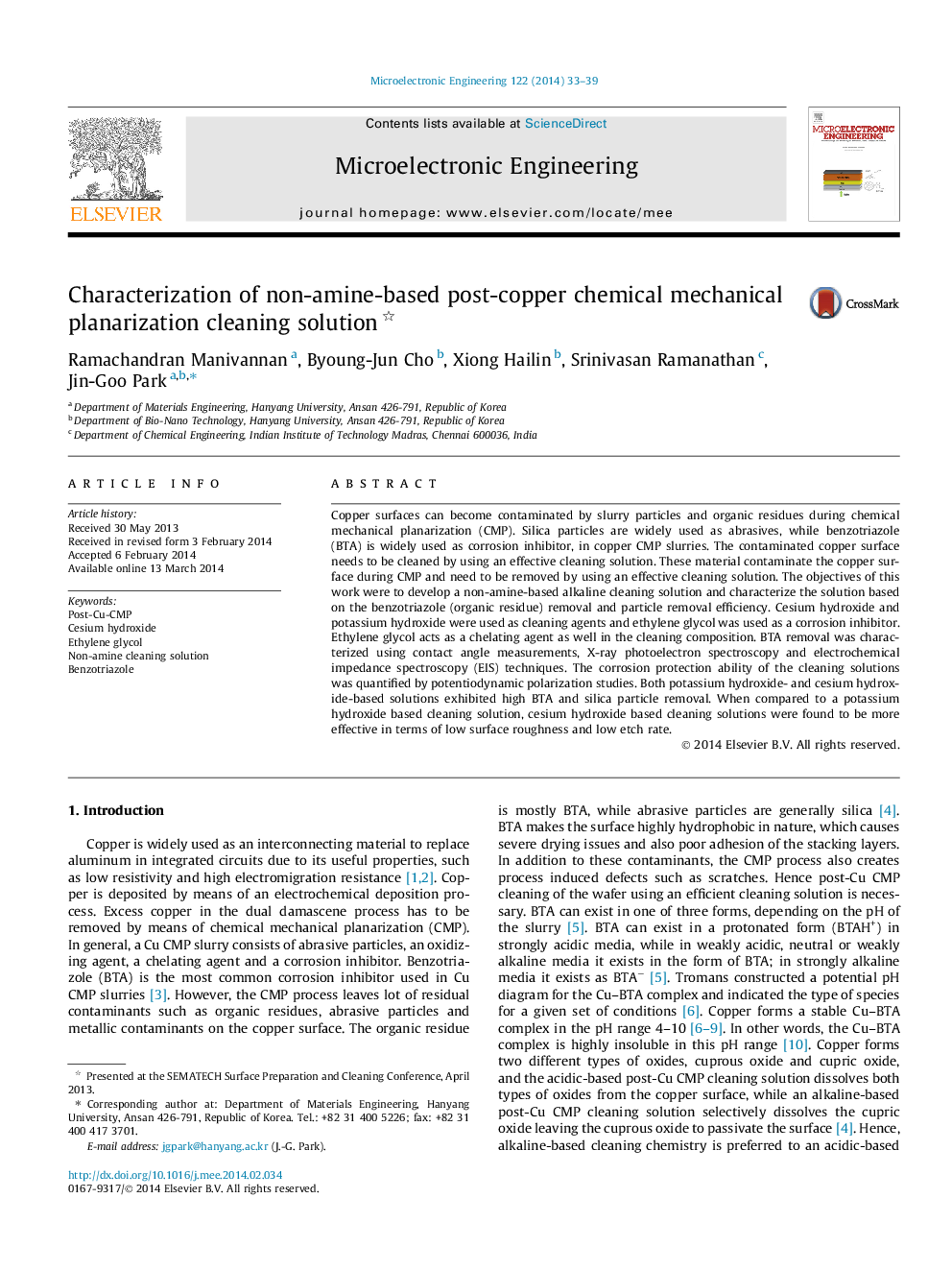| Article ID | Journal | Published Year | Pages | File Type |
|---|---|---|---|---|
| 539470 | Microelectronic Engineering | 2014 | 7 Pages |
•CsOH and KOH have been evaluated as alkaline candidates.•Ethylene glycol acts as a corrosion inhibitor in CsOH cleaning solution.•CsOH based cleaning solution is found to be more effective.
Copper surfaces can become contaminated by slurry particles and organic residues during chemical mechanical planarization (CMP). Silica particles are widely used as abrasives, while benzotriazole (BTA) is widely used as corrosion inhibitor, in copper CMP slurries. The contaminated copper surface needs to be cleaned by using an effective cleaning solution. These material contaminate the copper surface during CMP and need to be removed by using an effective cleaning solution. The objectives of this work were to develop a non-amine-based alkaline cleaning solution and characterize the solution based on the benzotriazole (organic residue) removal and particle removal efficiency. Cesium hydroxide and potassium hydroxide were used as cleaning agents and ethylene glycol was used as a corrosion inhibitor. Ethylene glycol acts as a chelating agent as well in the cleaning composition. BTA removal was characterized using contact angle measurements, X-ray photoelectron spectroscopy and electrochemical impedance spectroscopy (EIS) techniques. The corrosion protection ability of the cleaning solutions was quantified by potentiodynamic polarization studies. Both potassium hydroxide- and cesium hydroxide-based solutions exhibited high BTA and silica particle removal. When compared to a potassium hydroxide based cleaning solution, cesium hydroxide based cleaning solutions were found to be more effective in terms of low surface roughness and low etch rate.
Graphical abstractFigure optionsDownload full-size imageDownload as PowerPoint slide
